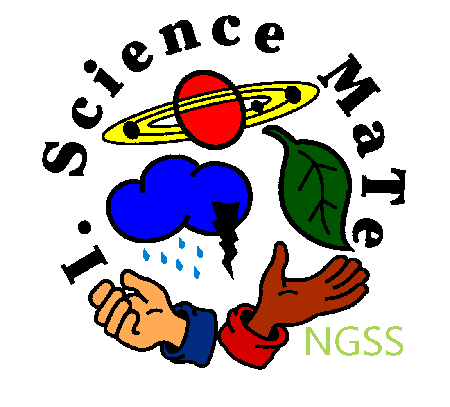BACKGROUND:
Determining the state of matter is not easy. Many times a substance
acts like a liquid, but then sometimes it acts as a solid.
Cornstarch and water is a classic example of this. If you add the
appropriate amount of water to cornstarch it will act as a solid, then if
you let the solid rest, it will flow.
Matter can also change states of matter depending on the temperature.
Water is an excellent example of how easily you can go from one state to
another, just by increasing or decreasing the temperature.
Traditionally we have taught students that there are 3 states of matter.
They assume that this is all there is. Solids, liquids, and
gases are states of matter that are familiar to us on the surface of the
Earth. However, deep in the Earth or deep in space, conditions are
different, allowing other states of matter to dominate. For
instance, plasma is the most common state of matter in the Universe.
It is important early in a child’s education to make students understand,
that humans define parameters within our world. But that does not
make it absolutely correct in other worlds.
PROCEDURE:
-
Tell students
they will learn about Matter and you might want to play the You Tube
song "THE
MATTER CHATTER SONG."
-
Discuss with students that there are 3 states of matter that water
takes, liquid, ice, and steam. In order to change from one state of
matter to another, energy needs
to be used. The problem that the students will explore is how much
heat it will take to convert a solid (ice) to a liquid.
-
First discuss with students what takes on the different forms of water
in nature.
|
SOLID
|
LIQUID
|
GAS
|
|
ice
|
rivers
|
steam
|
|
icicles
|
oceans
|
clouds
|
|
snow
|
rain
|
|
|
hail
|
|
|
-
Give each student a baggy with one ice cube inside. Have the students
feel the coldness. Tell them that they can use anything in the
classroom, including themselves to find a temperature that will melt
the ice cube, but make sure students don't use fire. You may want to
disqualify a heater because that will take some of the fun away. The
one who melts the ice cube the fastest is the winner. Students will
discover that certain places, like armpits will melt the ice cube
quickly. As students are doing this activity, make sure you go over
the change of states of matter (solid to liquid).
-
After students melt the ice cube you may want to put the water into a
dish and put it near a window and have the students look at it over
time. This can help emphasize
that water goes through another state of matter, gas.
-
If you have time you may want to read “Snowflakes and Crystals.”
Although the concepts are a little higher than Kindergarten,
the pictures help them to see the solid phase of water as a crystal.
